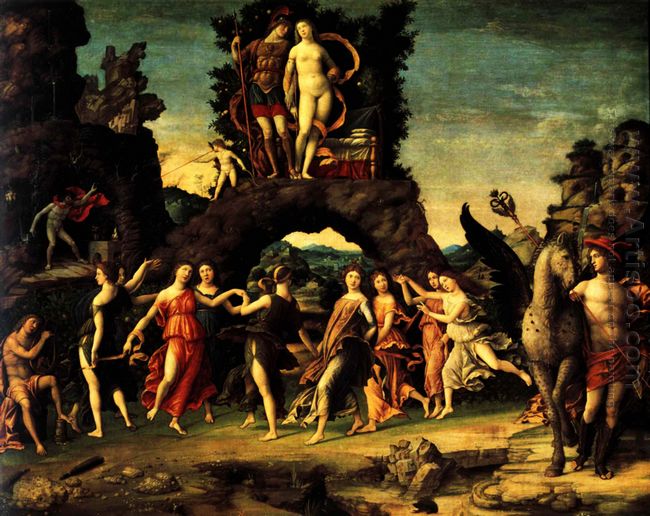The Parnassus: Mars and Venus measured 159x192cm, which is collected in Louvre Museum in Paris. At the age of 30, Andrea Mantegna moved to Verona and became the dominant person in the art world of this area. He spent his rest time here. The Parnassus: Mars and Venus was made when Mantegna was 65 years old.
In this mythological painting, the Parnassus was where the goddess led by Apollo lived. The sun god Apollo not only dominated the light but also the art. He himself was the god of music. It was said that soon after Hermes was born, Hermes had to submit the turtle guitar made by himself to Apollo to compensate the sin of stealing the cattle. Zeus discovered that Apollo was able to play the piano, and he made his 9 god Muse to Apollo. They lived in the Parnassus, singing and dancing all day. Then Parnassus became the birthplace of literature and art.
This High Renaissance painting took the nature as the environment to describe the joyful life of these gods’ singing and dancing. The king of gods—Zeus and Juno were in the upper part of the painting and the little cupid holding the bow with the left hand and the smelting god Wahl beside the cave echoed with each other. On the lower corner, Apollo was embracing the harp and dancing for the goddess Muse. And on the right, the one who was accompanying with the horse and wearing a pair of boots with wings was god Hermes. He held the stick of peace and approached without casting a shadow and leaving a trace. The gods in the painting were Zeus’s children so as to constitute the protoss with Zeus as the main body. The painter just took advantage of the mythological subjects and rich colors to depict the joyful scenes of the natural beauty, the beauty of human body and the earth.
